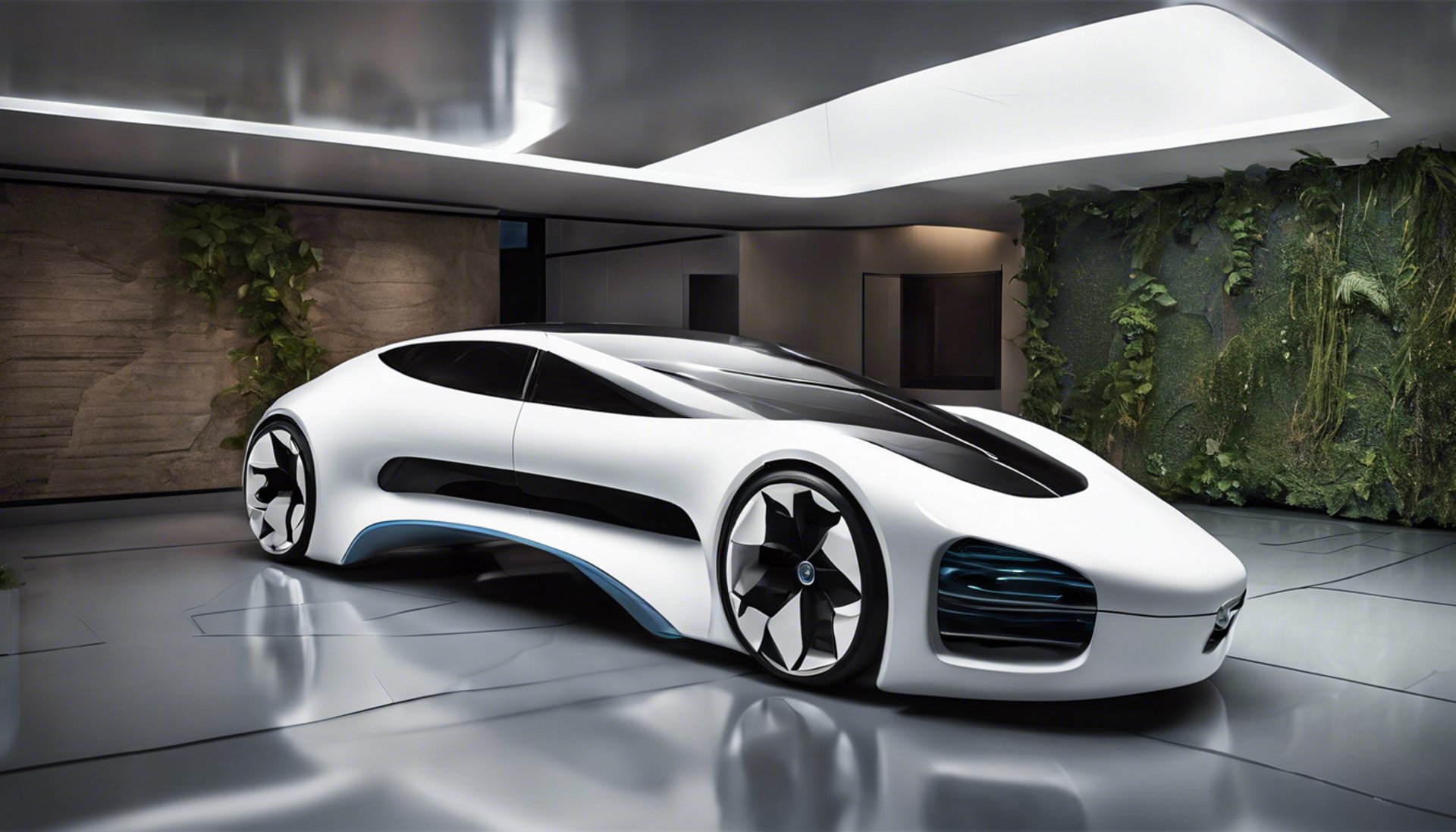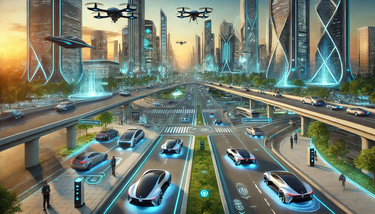The Future of Cars in the Next 10 Years: What to Expect
Discover how the future of cars will transform in the next 10 years. From electric vehicles and autonomous driving to flying cars and AI integration, explore the exciting innovations that will make driving safer, greener, and more efficient. Learn about cutting-edge technologies, sustainability efforts, and what you can expect from the automotive industry by 2034.
FUTURE OF CARS
Bashir & Farooq
10/22/20246 min read

My post content## The Future of Cars in the Next 10 Years: What to Expect
In the coming decade, the automotive industry is set to undergo a transformative evolution that will change the way we think about transportation. With technological advancements, sustainability goals, and shifting consumer preferences, cars in 2034 will be drastically different from those we see today. From electric vehicles (EVs) to autonomous driving, the future of cars promises exciting innovations that will make our roads safer, greener, and smarter.
1. Electric Vehicles (EVs) Take the Lead
The next 10 years will see electric vehicles becoming the dominant force in the car industry. Governments around the world are introducing stringent emissions regulations, and consumers are more environmentally conscious than ever before. This shift will propel automakers to fully embrace electric propulsion.
- Affordable EVs for the Masses: While electric cars have been around for a while, they have largely been out of reach for many due to high prices. However, advancements in battery technology will drive costs down, making EVs more affordable and accessible to the average consumer.
- Range Anxiety Becomes a Thing of the Past: One of the biggest concerns with electric cars has been their limited range. In the next decade, improvements in battery efficiency and charging infrastructure will eliminate range anxiety, making long-distance travel in electric cars more convenient.
- Charging Infrastructure Expansion: Expect to see a massive expansion of fast-charging stations across cities and highways. Major companies are already working on ultra-fast charging solutions that will reduce charging times to just a few minutes, similar to refueling a gasoline car today.
2. Autonomous Driving: The Age of Self-Driving Cars
Self-driving cars have been the stuff of science fiction for years, but in the next decade, they will become a reality. Advances in artificial intelligence, sensors, and data processing are bringing us closer to fully autonomous vehicles.
- Level 5 Autonomy: By 2034, we could see the widespread adoption of Level 5 autonomous vehicles, which require no human intervention at all. These cars will be able to navigate roads, handle complex traffic situations, and make decisions in real-time.
- Safety Improvements: Autonomous driving has the potential to significantly reduce accidents. Human error is the leading cause of road accidents, and with AI controlling the vehicle, the number of crashes is expected to plummet.
- Driverless Ride-Sharing: Companies like Uber and Lyft are already testing autonomous ride-hailing services. In the next 10 years, you might not even need to own a car. Instead, you’ll be able to hail a driverless vehicle that takes you wherever you need to go.
3. Sustainability and Green Technology
As concerns about climate change continue to grow, the automotive industry will need to adopt more sustainable practices. Future cars will be designed with a focus on reducing their environmental impact, from production to end-of-life disposal.
- Recycled and Sustainable Materials: The cars of the future will be built using more recycled and eco-friendly materials. Many automakers are already experimenting with sustainable materials like plant-based plastics, recycled metals, and even vegan leather for interiors.
- Energy-Efficient Manufacturing: Car manufacturers will adopt more energy-efficient processes in their factories, using renewable energy sources like solar and wind power to reduce the carbon footprint of production.
- Vehicle-to-Grid (V2G) Technology: Electric cars won’t just consume electricity; they will also give back to the grid. With V2G technology, your car can store excess energy and feed it back into the grid during peak hours, helping to stabilize the energy supply.
4. Connected Cars and the Internet of Things (IoT)
The integration of cars with the Internet of Things (IoT) will revolutionize how we interact with our vehicles. In the next 10 years, cars will be more connected than ever, communicating with other vehicles, infrastructure, and even your smart home devices.
- Smart Traffic Management: Connected cars will play a key role in reducing traffic congestion. By communicating with traffic signals and other vehicles, cars will be able to optimize their routes in real-time, reducing travel time and fuel consumption.
- Predictive Maintenance: Future cars will be equipped with advanced sensors that can predict when maintenance is needed. Your car will notify you when it’s time for an oil change, tire rotation, or other services, preventing costly repairs and improving the vehicle’s lifespan.
- Enhanced Infotainment: In-car entertainment systems will become more immersive, with augmented reality (AR) and virtual reality (VR) features. Passengers could enjoy movies or games in a virtual environment while the car takes care of the driving.
5. Alternative Fuels and Hydrogen-Powered Cars
While electric vehicles are set to dominate, other alternative fuels will also play a role in the future of transportation. Hydrogen fuel cells, in particular, offer an intriguing alternative to traditional gasoline and electric powertrains.
Hydrogen Fuel Cells: Hydrogen-powered cars produce zero emissions, with water vapor being the only byproduct. As hydrogen production becomes more efficient and affordable, we can expect to see more hydrogen fuel cell vehicles on the road.
Hybrid Solutions: In addition to hydrogen and electric power, hybrid systems that combine multiple energy sources will become more common. For example, vehicles could use a combination of hydrogen and electricity to optimize performance and range.
6. Shared Mobility and Car Ownership Models
The concept of car ownership will also evolve in the next decade. With the rise of autonomous vehicles and ride-sharing services, the traditional model of owning a personal vehicle may no longer be the norm for many people.
- Subscription-Based Models: Some automakers are already experimenting with subscription services, where customers pay a monthly fee to access a fleet of vehicles. In the future, you might be able to choose a car based on your needs for the day, whether it’s a compact car for city driving or a larger SUV for a weekend trip.
- Car Sharing and Ride-Hailing: Autonomous vehicles will make car-sharing services more accessible. In the future, it may be more economical to hail a self-driving car when you need one rather than owning a vehicle that sits idle most of the time.
7. Flying Cars and Urban Air Mobility
While it might sound far-fetched, flying cars could become a reality in the next 10 years. Several companies are already developing prototypes for electric vertical takeoff and landing (eVTOL) vehicles that could revolutionize urban transportation.
eVTOL Vehicles: These flying cars will be able to take off and land vertically, making them ideal for congested urban areas. By 2034, we may see the first commercial applications of flying taxis, offering a faster way to travel within cities.
Urban Air Mobility (UAM): The rise of flying cars will also give birth to new infrastructure, such as rooftop landing pads and air traffic management systems. Urban air mobility will become a new frontier in transportation, especially in megacities where ground-based traffic is a constant issue.
8. Artificial Intelligence (AI) and Machine Learning
AI will be at the heart of many innovations in the automotive industry over the next decade. From self-driving capabilities to personalized driving experiences, AI will enhance the way we interact with our cars.
- Personalized Driving Experience: AI will enable cars to learn from your driving habits and preferences. Your car might adjust the seat, climate control, and even entertainment options based on your past behavior, creating a more comfortable and personalized experience.
- AI-Powered Safety Features: AI will also improve safety by detecting and responding to potential hazards more quickly than a human driver. Advanced driver assistance systems (ADAS) will become more sophisticated, helping to prevent accidents before they happen.
9. Regulation and Policy Changes
As cars become more autonomous and connected, governments will need to update regulations to keep up with technological advancements. The next decade will see significant changes in traffic laws, insurance policies, and safety standards.
- Legal Framework for Autonomous Vehicles: Governments will need to create a legal framework for self-driving cars, addressing issues like liability in case of accidents and cybersecurity concerns.
- Environmental Regulations: Expect stricter emissions standards and incentives for adopting electric vehicles. Governments may introduce policies that encourage the use of renewable energy and penalize older, less efficient vehicles.
10. The Future of Car Design
Finally, car design will undergo a radical transformation over the next 10 years. With autonomous driving and electric powertrains, cars will no longer need traditional features like steering wheels or large front grilles.
- Minimalist Interiors: Without the need for a driver, future car interiors will prioritize comfort and entertainment. Expect spacious, lounge-like interiors with more focus on passenger comfort and convenience.
- Aerodynamic and Efficient Exteriors: The exterior design of cars will also change to improve aerodynamics and energy efficiency. Electric cars already tend to have sleeker designs, and this trend will continue in the future.
Conclusion
The future of cars over the next 10 years is incredibly exciting, filled with innovations that will make driving safer, greener, and more convenient. From electric vehicles and autonomous driving to flying cars and AI integration, the automotive industry is on the brink of a revolution that will redefine transportation as we know it. Buckle up—the future of cars is fast approaching, and it’s going to be a thrilling ride.
